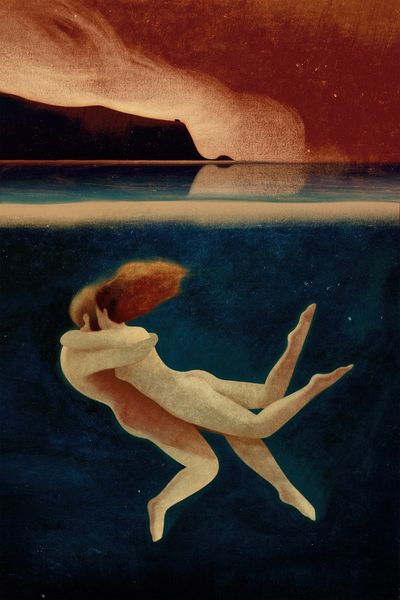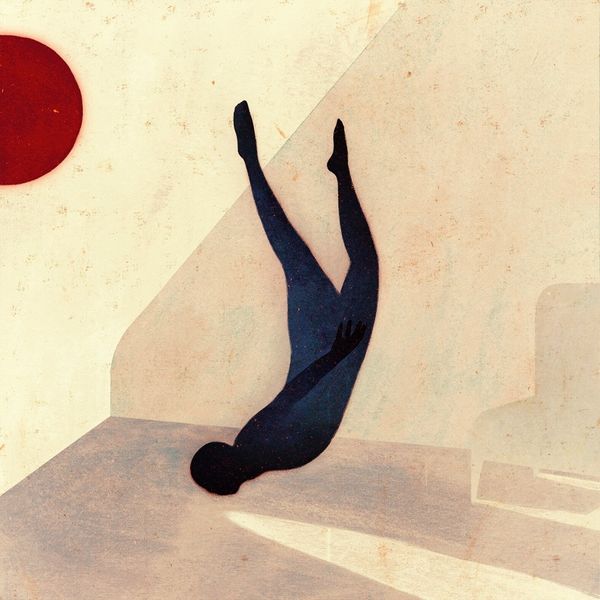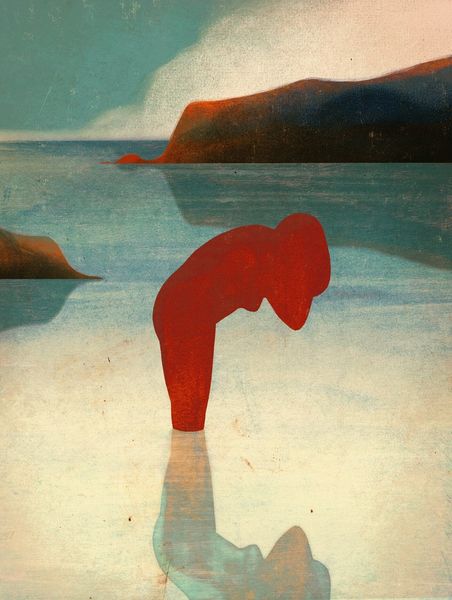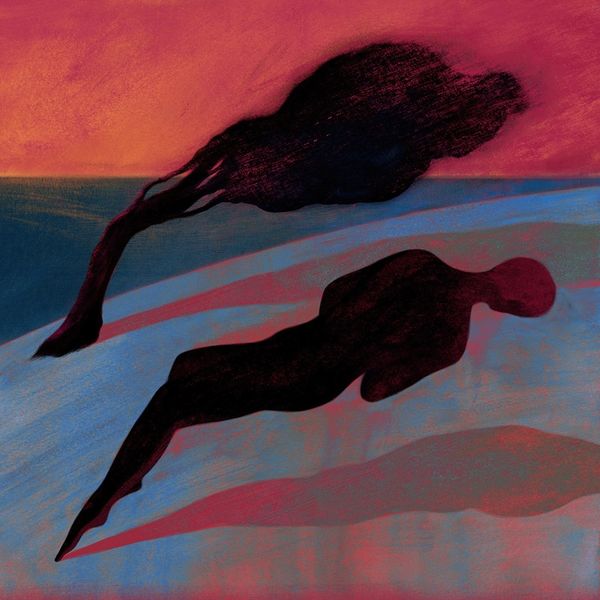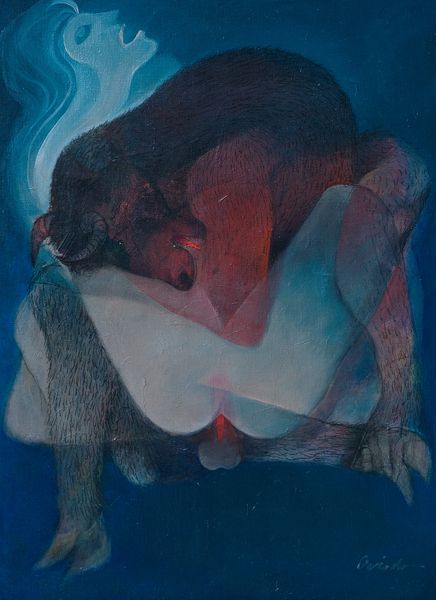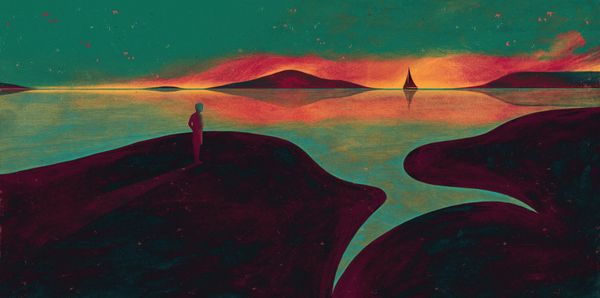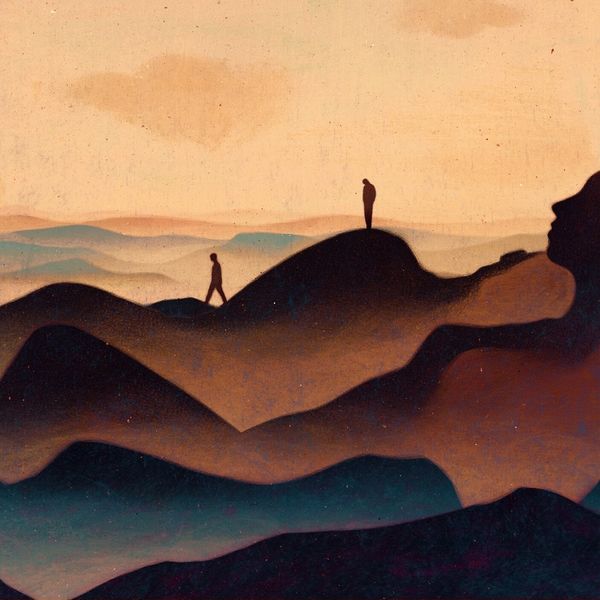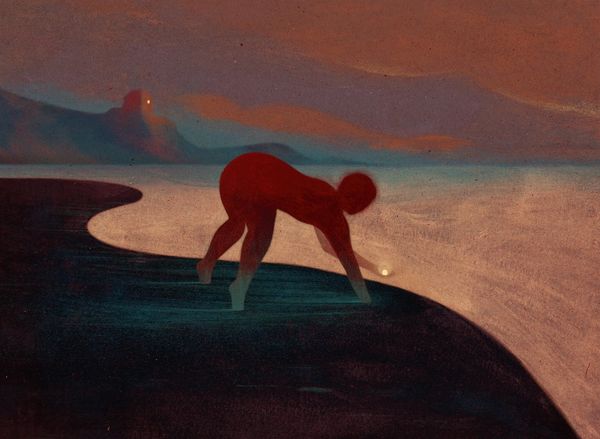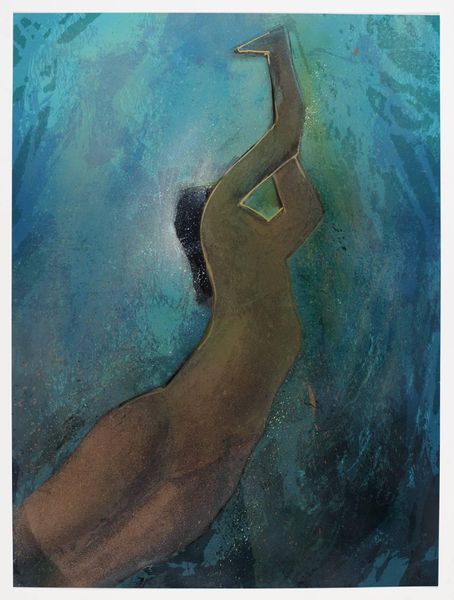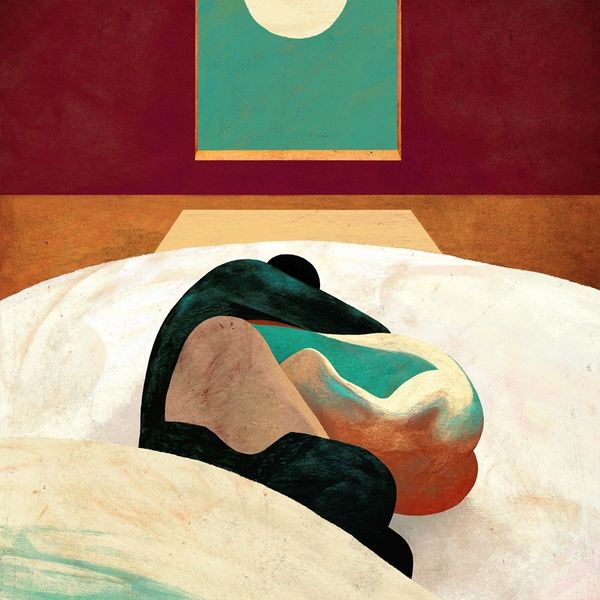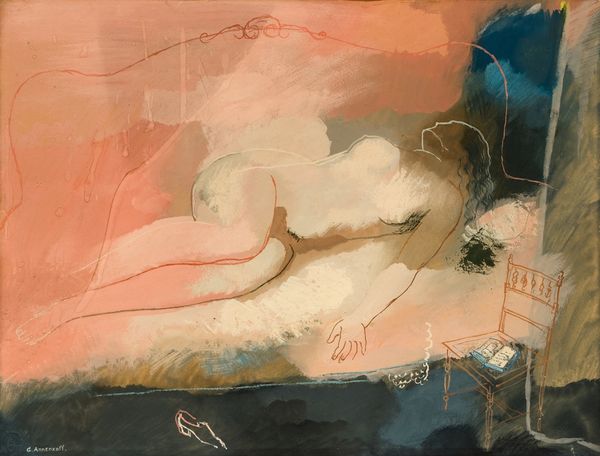
painting, oil-paint
#
painting
#
oil-paint
#
landscape
#
figuration
#
oil painting
#
nude
#
modernism
Copyright: Modern Artists: Artvee
Editor: Here we have Owen Gent’s 2022 oil painting, "Dundas." It has a serene feel; figures lie, gazing toward a dark horizon. What stands out to me is the contrast between the rough texture of the red foreground and the smoothness of the blue sky. What are your initial thoughts? Curator: Considering the materiality, the use of oil paint immediately invites questions about its source and production. Who made this paint? Where were the raw materials mined or grown? The intense red pigment; its origin has implications on colonial histories. Editor: Interesting, I hadn’t considered that! I was just thinking about the formal aspects, the use of bold color and simplified forms. Curator: But the "simplified forms" also demand an engagement with the means of production. Think about the artist’s hand – the labor involved in creating these shapes with precision, perhaps even masking techniques that allow a distinct finish on a fine linen or rough canvas. And consider where this canvas was produced: what sort of labor was involved to produce it, from raw materials to final product? Editor: So, even this seemingly calm image can be connected to global production chains? Curator: Precisely. We can trace the materials, labor, and economic forces that converged to make this image possible. Even the act of viewing; what labour enables the viewer to gaze at this painting? Who benefits from that labour? Editor: This reframes how I look at art. It's not just about aesthetics; it is really about tracing the network of production, labor, and consumption embedded within a piece of artwork. Curator: Exactly. Seeing art through this lens opens a door to understanding its complex relationship with the world around us.
Comments
No comments
Be the first to comment and join the conversation on the ultimate creative platform.
